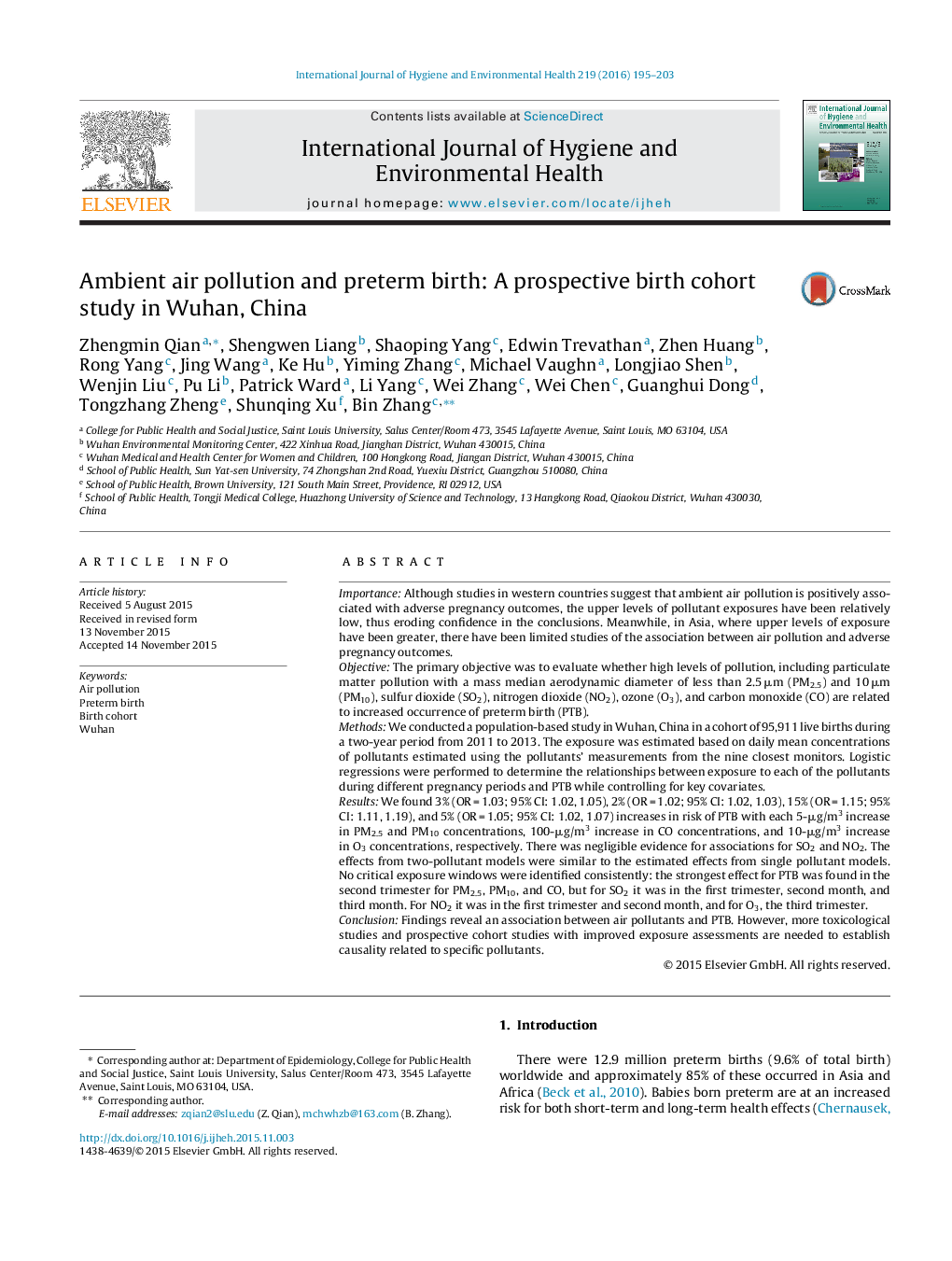| کد مقاله | کد نشریه | سال انتشار | مقاله انگلیسی | نسخه تمام متن |
|---|---|---|---|---|
| 2588414 | 1561884 | 2016 | 9 صفحه PDF | دانلود رایگان |
ImportanceAlthough studies in western countries suggest that ambient air pollution is positively associated with adverse pregnancy outcomes, the upper levels of pollutant exposures have been relatively low, thus eroding confidence in the conclusions. Meanwhile, in Asia, where upper levels of exposure have been greater, there have been limited studies of the association between air pollution and adverse pregnancy outcomes.ObjectiveThe primary objective was to evaluate whether high levels of pollution, including particulate matter pollution with a mass median aerodynamic diameter of less than 2.5 μm (PM2.5) and 10 μm (PM10), sulfur dioxide (SO2), nitrogen dioxide (NO2), ozone (O3), and carbon monoxide (CO) are related to increased occurrence of preterm birth (PTB).MethodsWe conducted a population-based study in Wuhan, China in a cohort of 95,911 live births during a two-year period from 2011 to 2013. The exposure was estimated based on daily mean concentrations of pollutants estimated using the pollutants’ measurements from the nine closest monitors. Logistic regressions were performed to determine the relationships between exposure to each of the pollutants during different pregnancy periods and PTB while controlling for key covariates.ResultsWe found 3% (OR = 1.03; 95% CI: 1.02, 1.05), 2% (OR = 1.02; 95% CI: 1.02, 1.03), 15% (OR = 1.15; 95% CI: 1.11, 1.19), and 5% (OR = 1.05; 95% CI: 1.02, 1.07) increases in risk of PTB with each 5-μg/m3 increase in PM2.5 and PM10 concentrations, 100-μg/m3 increase in CO concentrations, and 10-μg/m3 increase in O3 concentrations, respectively. There was negligible evidence for associations for SO2 and NO2. The effects from two-pollutant models were similar to the estimated effects from single pollutant models. No critical exposure windows were identified consistently: the strongest effect for PTB was found in the second trimester for PM2.5, PM10, and CO, but for SO2 it was in the first trimester, second month, and third month. For NO2 it was in the first trimester and second month, and for O3, the third trimester.ConclusionFindings reveal an association between air pollutants and PTB. However, more toxicological studies and prospective cohort studies with improved exposure assessments are needed to establish causality related to specific pollutants.
Journal: International Journal of Hygiene and Environmental Health - Volume 219, Issue 2, March 2016, Pages 195–203
